Storing cabbage in the freezer allows you to buy it and keep it at its best for longer. The cabbages seen in stores in late spring will have often been picked during the previous fall, so instead of buying older cabbages, it is much easier to buy cabbage when fresh and freeze it to keep it fresh. You can also freeze leftover cooked cabbage easily without its texture being affected.
Cabbage is a nutritious and budget friendly food and whether you use it fresh or frozen, it adds texture and flavor to stews, soups, stir fries, slaws, salads and more. Instead of the old fashioned boiling, sautéing cabbage is a great way to lets its flavors shine through. All you need to do is add cabbage and seasoning to a fry pan with some oil and gently sauté it for around ten minutes. If you add a little stock and finely chopped onion and bacon to the cabbage as well, it will give you a rich side dish that will complement many recipes.
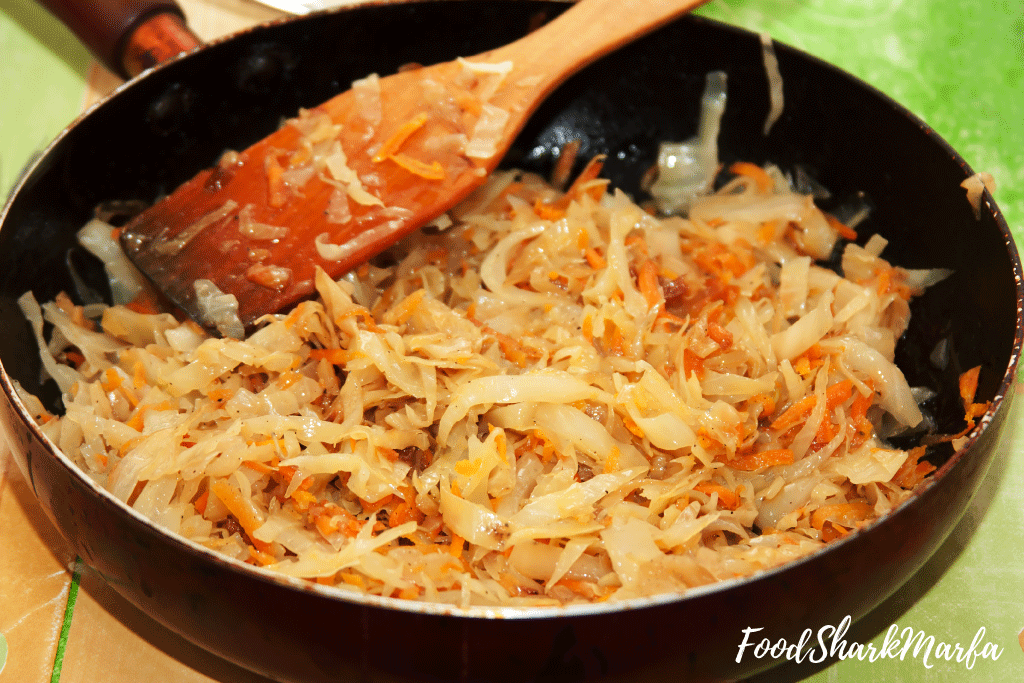
How to Store Fresh Cabbage
Depending on the type of cabbage, it may last for as long as four weeks when stored in the crisper drawer of the refrigerator, although it will usually be at its best in the first week or so. Even if you will be freezing your cabbage, do store it in the refrigerator until you are ready to freeze it.
Cabbage which has already been cooked will keep for will keep for around three days in the refrigerator when stored in an airtight container. It can also be frozen ready cooked, although it will lose some of its texture and flavor.
What Do You Need to Know Before Freezing Raw or Blanched Cabbage?
Blanched or part-cooked cabbage will keep its quality for as long as nine months in the freezer. If you are lucky enough to have a vacuum sealer, then it can keep for well over 12 months. As with other frozen produce, its texture can be affected slightly.
Cabbage is best frozen when it has been blanched rather than leaving it raw, and I will go into more detail about the reasons for that in a moment. If you want to freeze raw cabbage, then be aware that this is more of a temporary storage solution, as it will only keep at its best for a couple of months in the freezer. You can also lose more of the texture.
Like other vegetables and fruits, cabbages contain enzymes and bacteria and other microorganisms which over time begin to break down the cabbage, altering its flavor, color and texture.
When cabbage is blanched (also known as scalded), either by water, steam or microwaving, this part-cooking process stops the action of the enzymes and kills microorganisms. Blanching also ensures that any remaining dirt is removed and because it also wilts the cabbage, it makes it easier to pack up for freezing.
Blanched cabbage will freeze better and keep longer in the freezer than raw cabbage. Personally, I never freeze raw vegetables, I will always blanch them as I have found that freezing them raw alters the texture and flavor too much.
If you do fancy freezing cabbage raw, then you may want to do a test run first; compare a batch that has been frozen raw against some that has been blanched. Depending on how you want to use it, raw cabbage freezing may be acceptable.
Just like fresh cabbage, shredded frozen cabbage is handy for dropping straight into the pan, it can also be thawed and used in salads and slaws.
When buying a cabbage to freeze, buy one that does not have damage to it or any mold growing on it and you should look to freeze it as soon after purchase as you can.
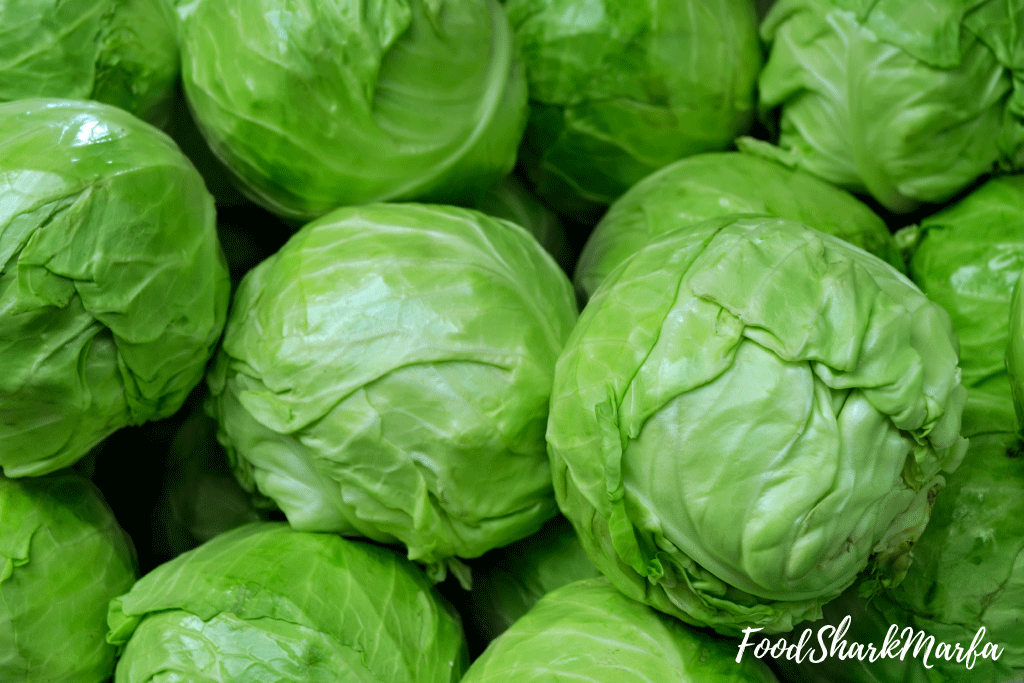
How Do You Prepare A Fresh Cabbage for Freezing?
Any type of cabbage is suitable for freezing, whether it is green, red, Napa, savoy or one of the many other varieties of cabbage available.
If you are preparing a homegrown cabbage, then take off the tough outer leaves of the cabbage and pop it in a bowl of cold water for at least 30 minutes or for as long as a couple of hours if very dirty. You can also add a little salt to the water as this will help kill any bugs hiding in the leaves. Once it has been well soaked, give it a quick rinse under the faucet, shake, pat dry with some paper towels and transfer it to the cutting board.
If you have bought your cabbage from the store, then a quick rinse and pat dry after removing the outer leaves will usually be enough as it will already have been cleaned after harvesting.
Cabbage is versatile when freezing, you have the choice to freeze it as wedges, leaves or shreds. If you do not yet know how you want to use your cabbage, or you want to use it for different recipes, then I recommend you freeze it as wedges, so you can slice or shred it when you come to use it. You can also freeze whole cabbages, but these do take more room up in the freezer and you will need to use it all after defrosting.
Once on the cutting board, you can shred, slice or cut the cabbage into wedges. If you are doing wedges, leave any sections of core in to help hold the leaves together.
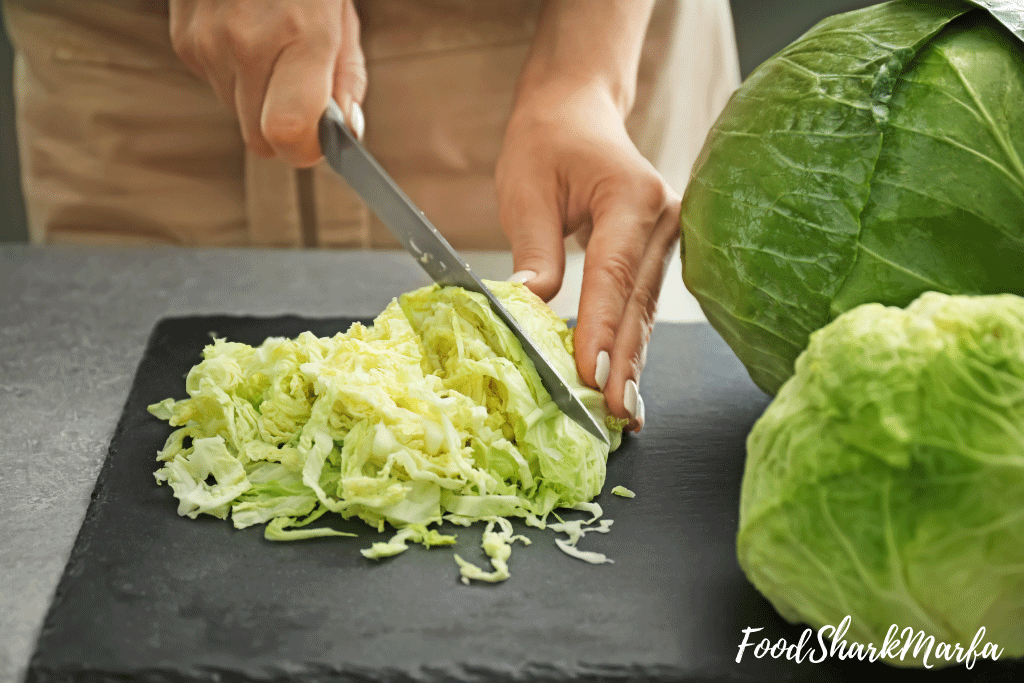
The technique known as water blanching is usually the easiest way to prepare cabbage – mainly due to cabbages being larger. Using a pan big enough for the cabbage, fill it with water and bring to a rolling boil. Once boiling, add the cabbage and keep it boiling. If you have a wire basket, you may want to use this in the pan.
Cabbage wedges will need blanching for 3 minutes, or shredded cabbage for 1½ minutes only. Washed and trimmed bok choy should be blanched for 2 minutes. The time starts the moment you place the cabbage in the boiling water. If you want to blanch a large batch of cabbage, you can re-use your boiling water several times.
It is important that you do not over-blanch as this causes a loss of color and flavor, as well as some of the nutrition from the cabbage. If you wish to steam blanch a small amount of cabbage, then it will take around 1.5 times longer than water blanching.
While the cabbage is blanching, add some ice and water to a separate large bowl. As soon as the cooking time is up, drain the cabbage from the hot water and place the cabbage into the bowl of ice water. This will stop the cabbage from cooking any further. Leave it to cool for a few minutes in the ice water; it will help if you keep adding ice to the water. Once cooled, remove the cabbage, shake off some of the excess water and use some paper towels to pat it dry. Removing as much excess water from the cabbage as possible will reduce the risk of freezer burn.
Once dry, spread the cabbage out on a cookie sheet covered in wax paper and place the sheet in the freezer overnight. Once frozen, the cabbage can then be transferred to a Ziplock bag - just squeeze out the excess air before sealing. Do not forget to write down the freezing date on the bag!
If you do want to freeze cabbage raw, you just need to wash and pat it dry before cutting it and spreading it out on a cookie sheet to freeze. It can then be bagged.
How Do I Freeze Cooked Cabbage?
If you have leftover boiled cabbage, spread it out on some paper towels to dry it out completely. Then the cabbage out on a cookie sheet covered in wax paper and place the sheet in the freezer for around 30 minutes or so – depending on how much you are freezing. Once the cabbage is frozen, put into a Ziplock bag, remove excess air to reduce the chance of freezer burn and place in the freezer.
Because you have frozen it on the cookie sheet, the cabbage should not clump together, which means you can grab a couple of handfuls from the bag when you want it. The other option is to bag it in smaller ready-to-use portions, so you can just take the full bag out to thaw. Cooked boiled cabbage will stay at best quality for between three and six months in the freezer.
If the cabbage has been fully cooked until tender, then it will lose more texture after freezing. If you can, leave the cabbage slightly undercooked before freezing as it will have a better texture once thawed.
If you are sautéing or frying cabbage, try to leave the portion that you want to freeze slightly undercooked before freezing. Once the sautéed cabbage has been cooled properly (and in the refrigerator if there is bacon with it), place it into Ziplock bags, squeeze out all the air and then seal the bag. Write on the freezing date and put the bags straight into the freezer.
Cabbage soup can be frozen in Tupperware containers, just leave a little space at the top to allow the soup to expand as it freezes.
Leftover cabbage rolls can be more awkward to freeze as there is a risk of them losing texture once defrosted. If you chill leftover rolls in the refrigerator before freezing this can help reduce some of the sogginess, or, if you do want to make a large batch for the freezer, then blanch the cabbage leaves and freeze as above and then once the leaves have thawed, make your cabbage rolls as fresh.
If you make your own sauerkraut, then a fully fermented sauerkraut is also suitable for freezing. Use bags or Tupperware but leave some space at the top to allow for expansion as it freezes.
Cooked red cabbage will freeze in the same way that cooked green cabbage will.
How to Defrost Blanched or Cooked Cabbage
You can either thaw the blanched cabbage it in the refrigerator if you want to use it for slaw or cabbage rolls, but if you will be cooking it, just drop it straight into whatever you are cooking. The cabbage has only been part cooked through blanching, so it will still need to cook for between three to five minutes or until tender. If you have frozen it as wedges, you will need to cut out the core as well.
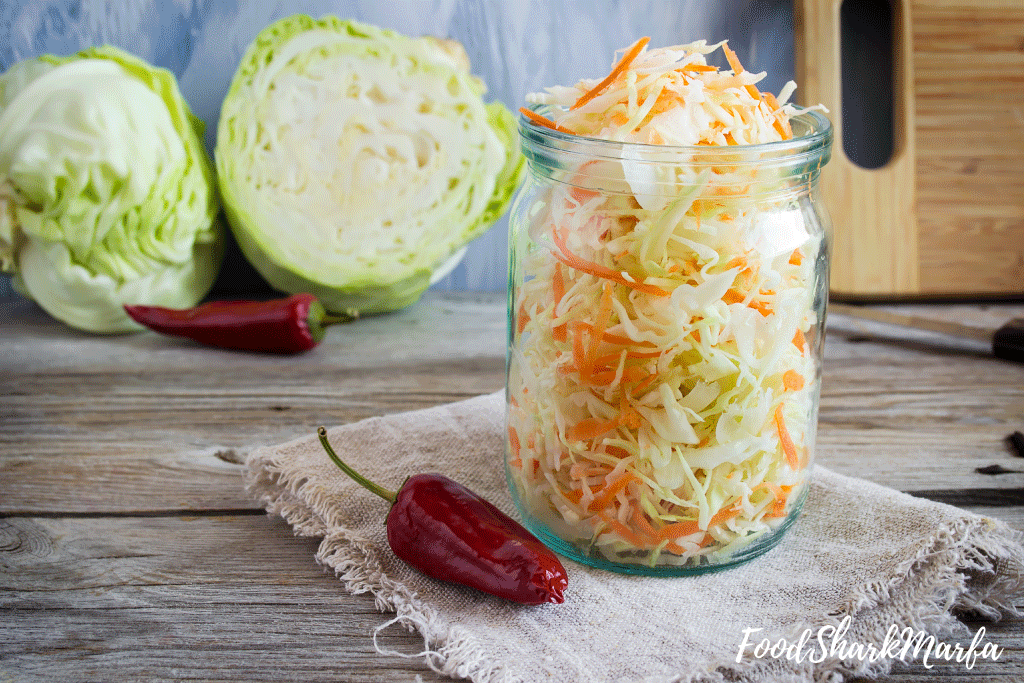
It is best to defrost cooked cabbage in the refrigerator before reheating to keep it from getting as soggy, otherwise, depending on how you froze the cooked cabbage, it can just be reheated gently straight from frozen and will then be ready to serve.
If you give your Ziplock bag a good clean inside and out and allow it to dry thoroughly, you can use it to store a new batch of frozen cabbage, or other vegetables such as carrots or broccoli.
Summary
In summary, yes, you can freeze cabbage and freezing cabbage is easy to do but is best done after the cabbage has been blanched, as this helps stop it degrading as much in the freezer. Once thawed, your frozen cabbage can be used for coleslaws and cabbage rolls, or you can just add the frozen cabbage straight to your stew, soup or stir fry.
You can also freeze leftover cooked cabbage, but this is more prone to losing texture and will not keep in the freezer as long as blanched cabbage will.

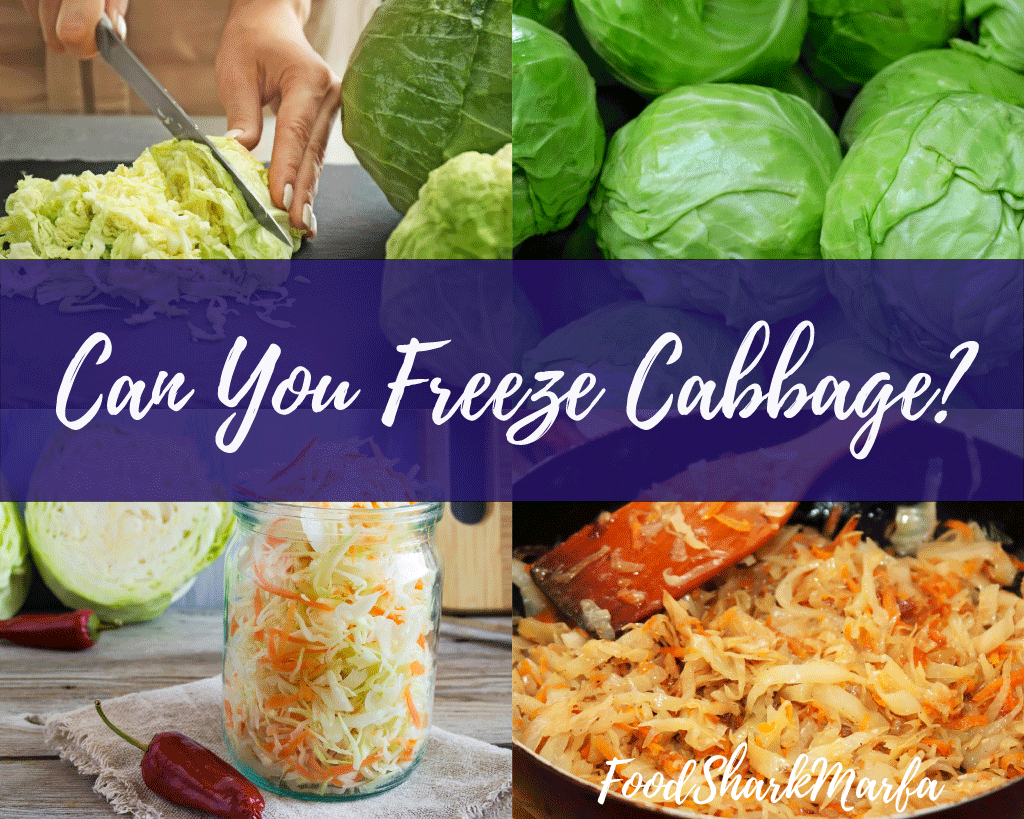

Thanks so much for the great help Smiles